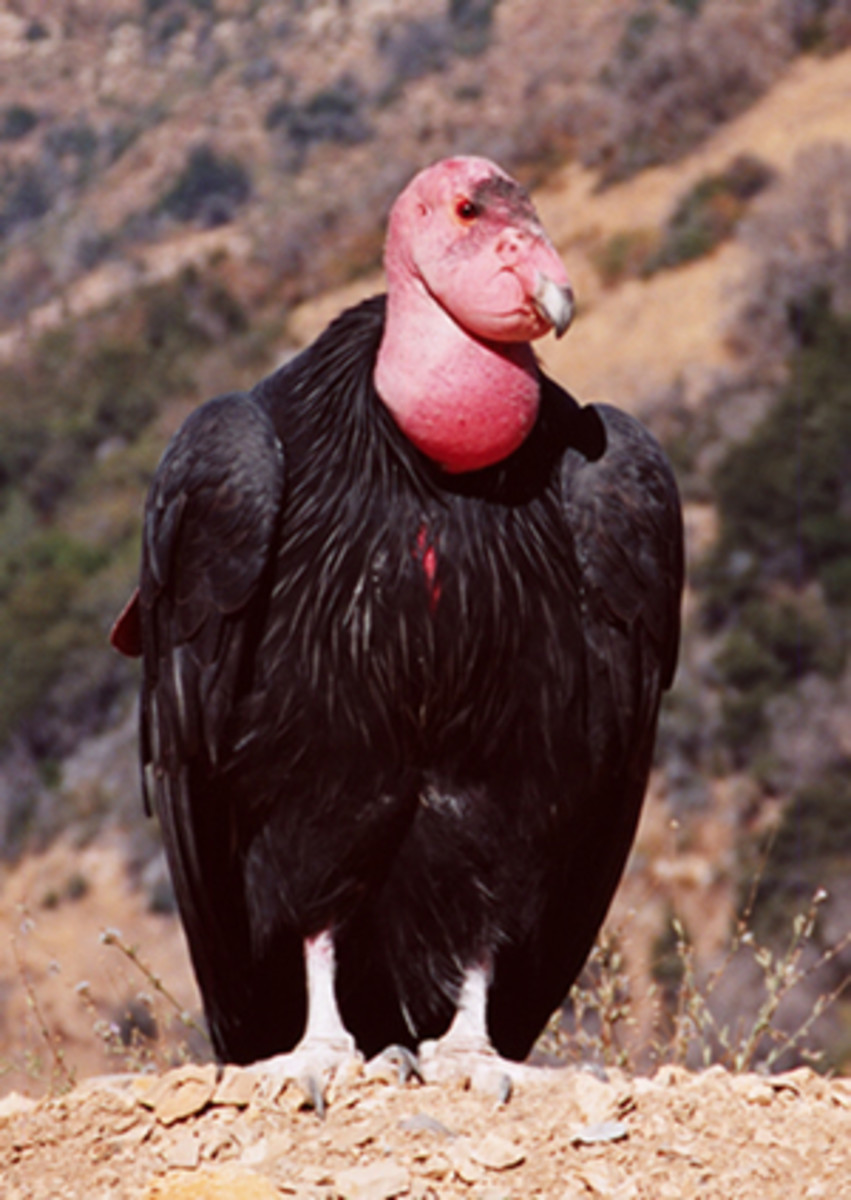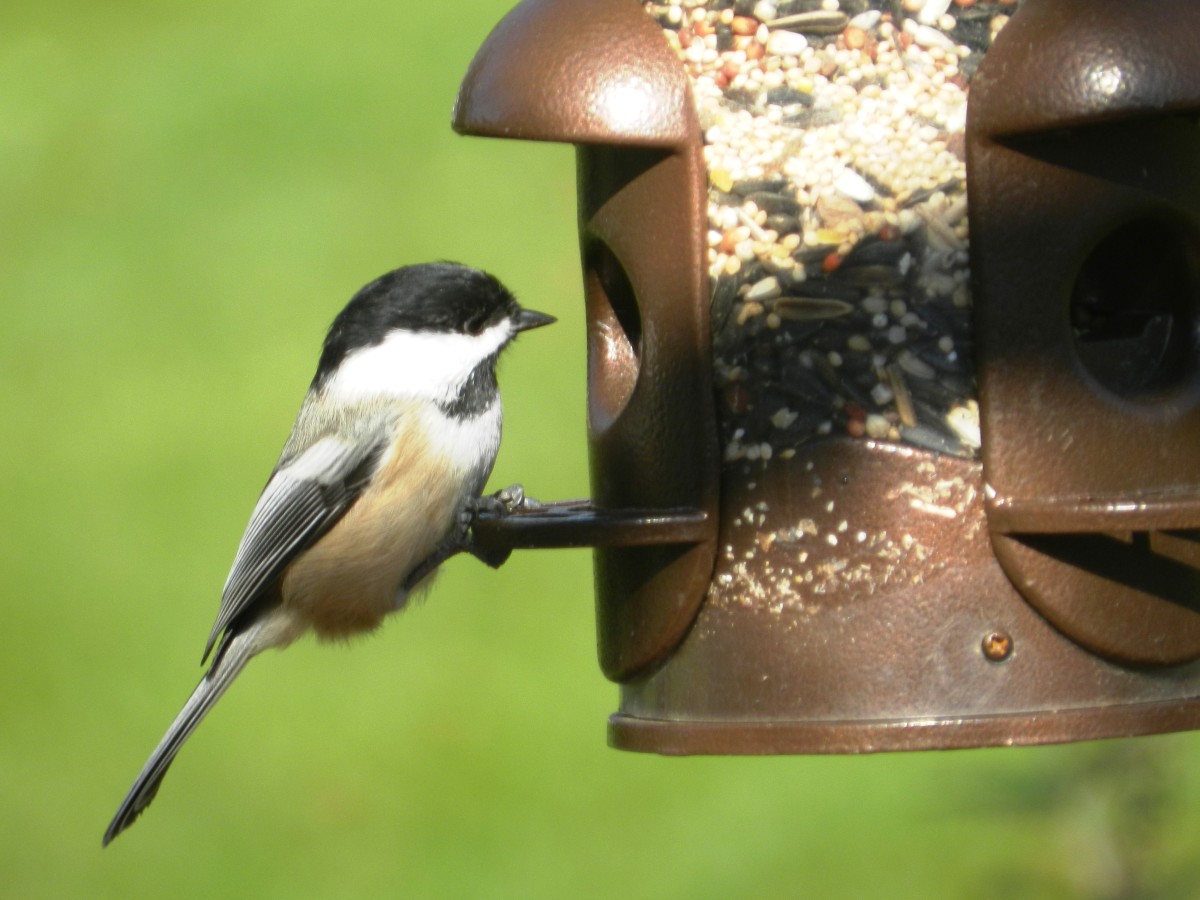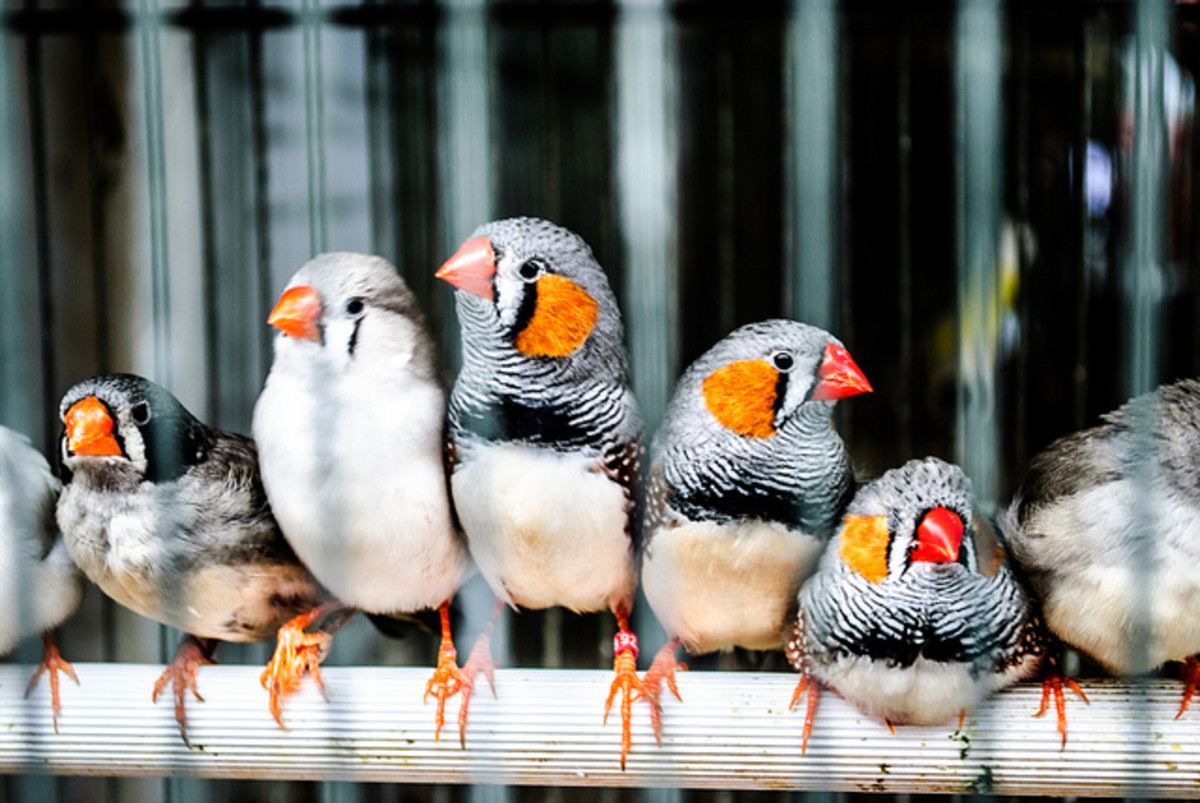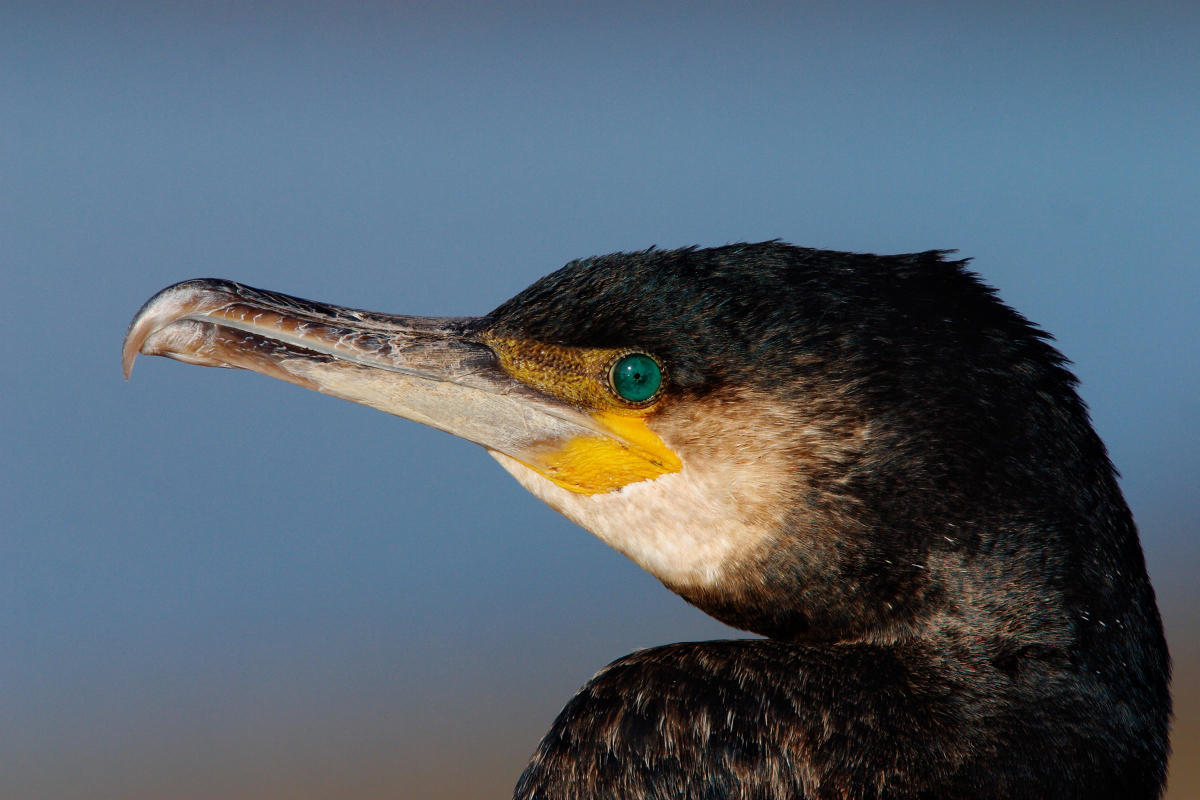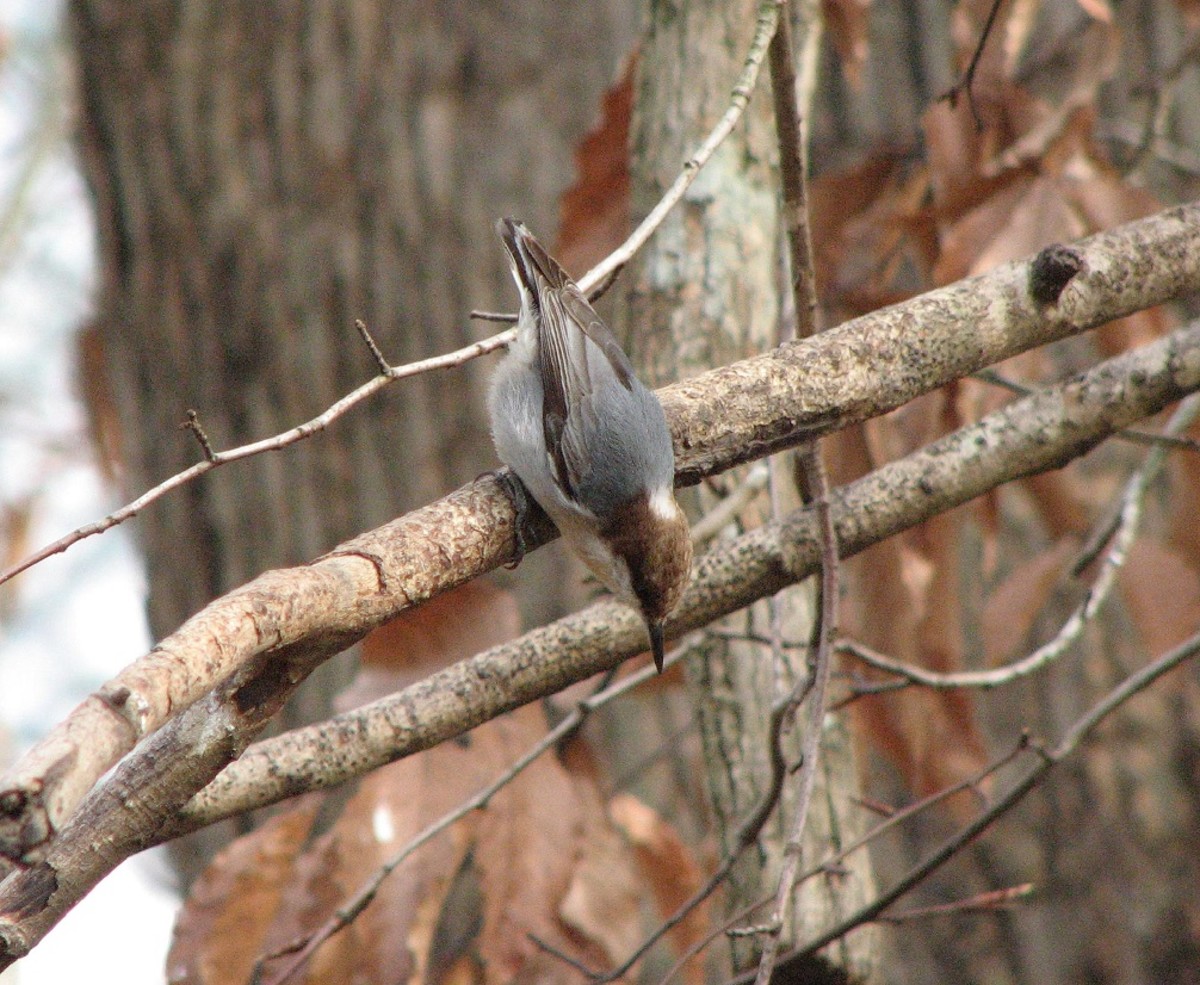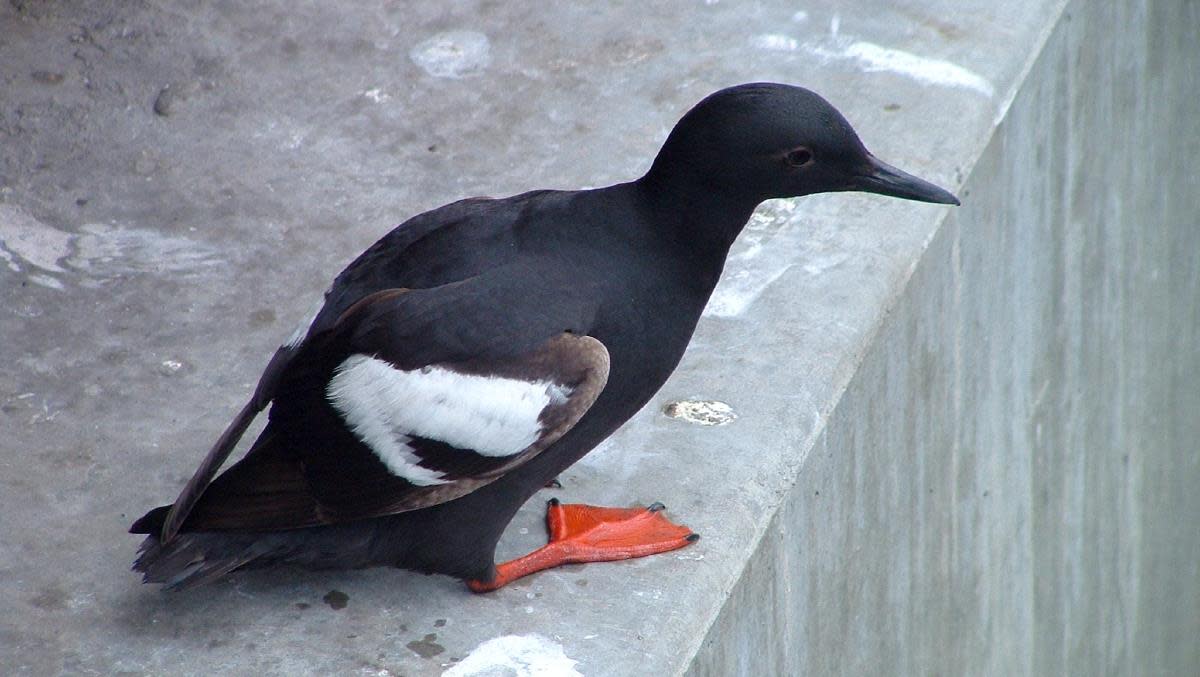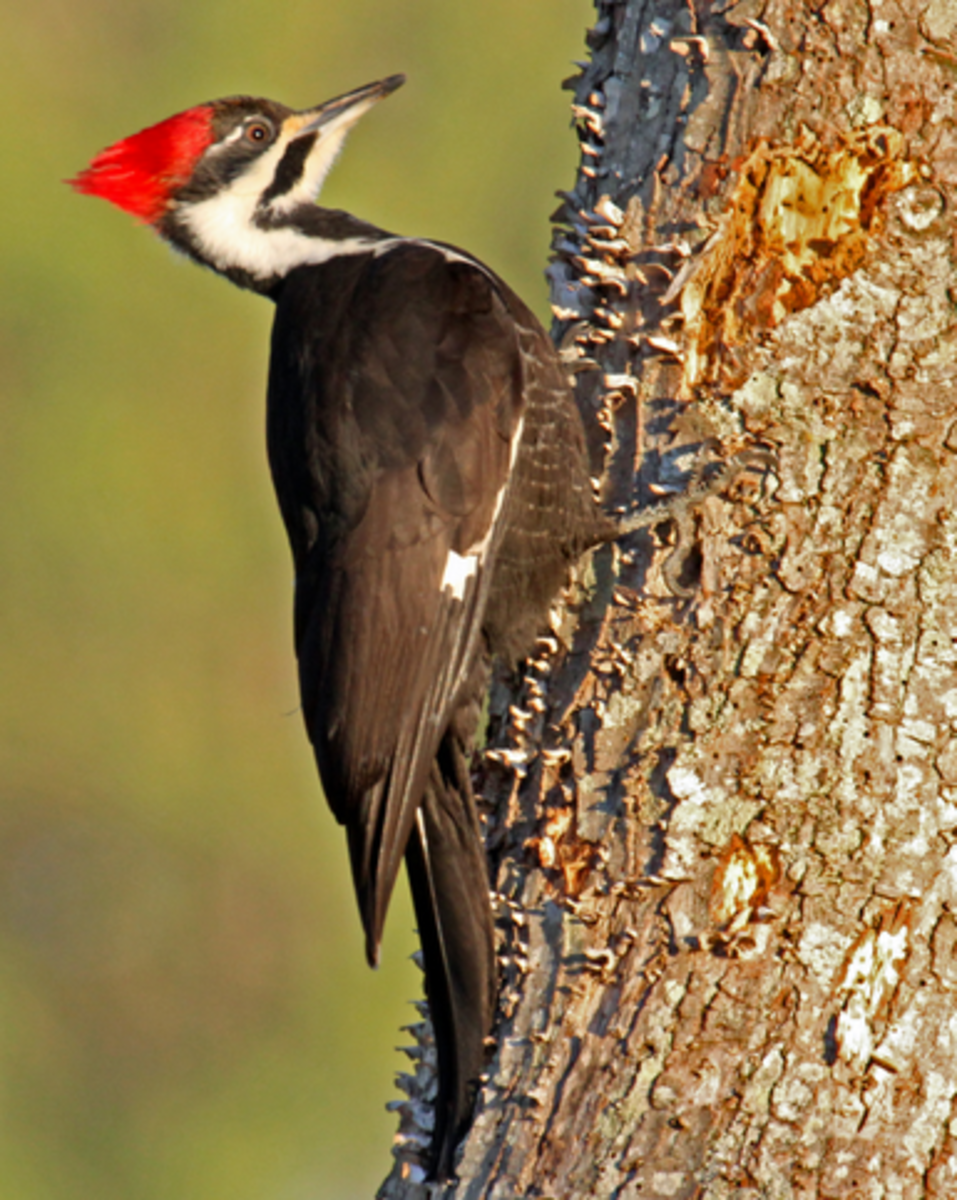Chickadees: An Illustrated Guide to the Black-Capped Chickadee (Poecile atricapillus; formerly Parus atricapillus)
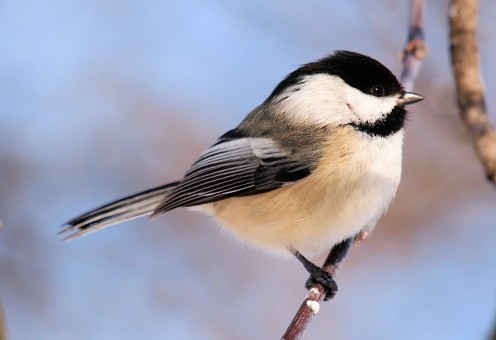
These plucky little black, gray, and white darlings—among the most adored songbirds—make the rounds of neighborhood feeders, often dining while perched upside down. Relatively tame, they can be tempted, with a little patience, to feed from the hand, landing on an outstretched palm to nibble on seeds.
Chickadees, sometimes called Tit or Titmice, often form the nucleus of mixed flocks of woodpeckers, nuthatches, creepers, and kinglets.
Good Looks
Chickadees are beautiful little birds with black cap and throat, white cheeks, soft gray back, and tan to white underparts. Wing feathers are edged in thin white bands. The tail is gray or white. The short beak is dark. The wings are short, the tail, long. The male, female, and juvenile all look alike.
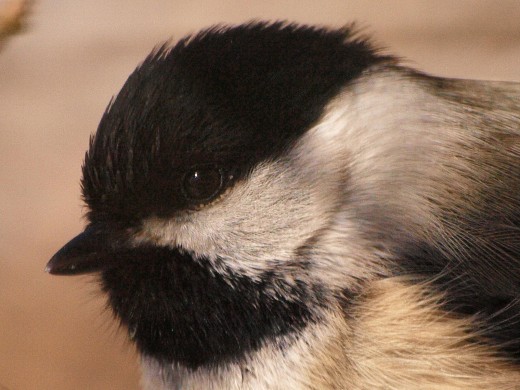
Size
Overall size: 4¾–5¾" (12-15 cm)
Weight: .4 oz (11 g) (About the weight of a dime and two nickles.)
Habitat
A common visitor to back-yard feeders, especially in the winter, their natural habitat is deciduous and mixed forests (especially along the edges) and open woodlands, but they are a common urban dweller.

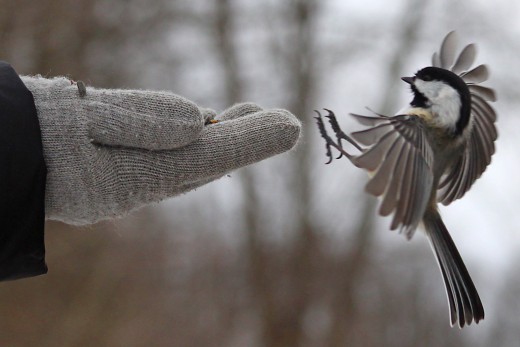
Nesting
Generally monogamous, pairs are usually formed in the fall. Then, in the spring, chickadee flocks disband and move into wooded areas to nest. The nest is formed into a cup made up of grass, fur, plant down, feathers, and moss, often built into a hole in a rotten tree, excavated by the mates. They also use natural cavities and man-made birdhouses.
Nests can be as much as 10 inches deep, dug out using the birds' beaks, with the telltale chips being scattered by the birds so as not to attract notice. A flap is constructed on one side of the nest, which is folded over by these smart little birds to conceal the nest from predators.
Both male and female clear the nest cavity, but the female is the nest builder. She then lays and incubates 5–10 (usually 6–8) brown-speckled white eggs once a year. Incubation is 11 to 13 days. Both parents tend the young for about two weeks. Once they leave the nest they stay close by for parental feeding up to two weeks more. Chickadees breed only once per season.
Range and Migration
There are seven species of chickadees in North America; the best known are Black-capped, Carolina, and Boreal.
Range Black-capped Chickadees are residents of the U.S. from northern New Jersey to Missouri, New Mexico, and northern California, ranging up into Alaska and across southern Canada to Newfoundland. The slightly smaller Carolina Chickadee (Poecile or Parus carolinensis) does not overlap with the Black-capped, but ranges from central New Jersey to southeastern Kansas and as far south as central Florida, the Gulf Coast and southeast Texas. The Boreal Chickadee (Poecile or Parus hudsonicus), which has a brown crown and back, is the northern species, inhabiting the coniferous forests of Canada.
Migration Although they are permanent residents, in the winter Black-capped Chickadees can range slightly further south into Maryland and Texas. Sometimes they make these moves in very large numbers. Nonetheless, most stay put, likely due to their ability to drop body temperature about 20° F to conserve energy and endure the cold.
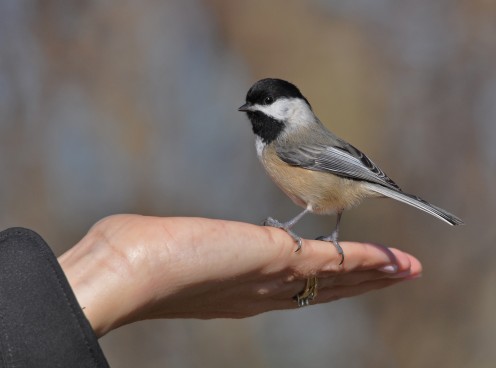
Audio link to hear the chickadee "fee-bee" whistle.
Food
They will eat all kinds of insects—including large caterpillars, spiders, slugs, etc.—as well as seeds (such as sunflower seeds), shelled peanuts, and fruit. They are loyal backyard birdseed and suet feeders.
Song and Call
Known for its raspy "chick-a-dee-dee-dee" or whistled "fee-bee" or "fee-bee-bee", with the first note higher and stronger. Sophisticated communicators, they have a warning call that seems to be understood by other bird species that flock around them, who then sometimes join together to chase the predator away.
According to some sources, the song of the Black-capped Chickadee is one of the most complex vocalizations of all animals, acting as a contact call, an alarm call, to identify an individual, or to indicate recognition of a particular flock.
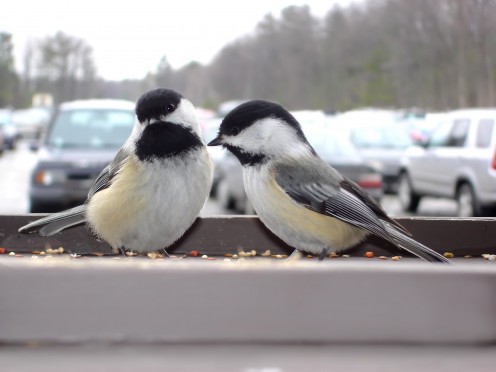
Social Behavior
Backyard feeders are ideal spots for observing the pecking order of a flock of chickadees. They have a linear hierarchy, and the most assertive pair will dominate the other birds of their respective sexes.
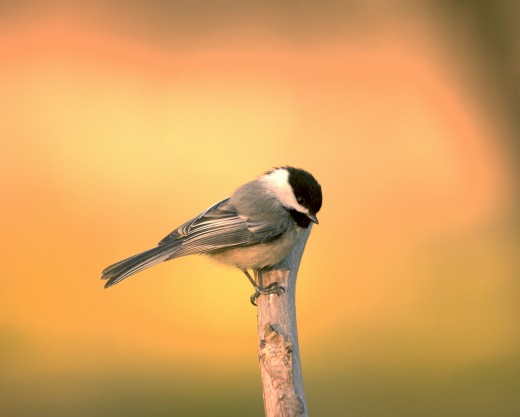
Longevity
Most Black-capped Chickadees live about 2½ years; the longevity record is 12 years, 5 months.
State Bird
The Black-capped Chickadee is the state bird of Maine and Massachusetts.
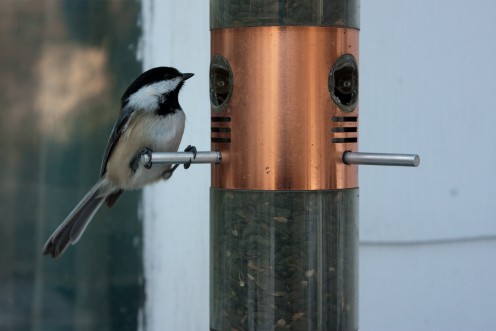
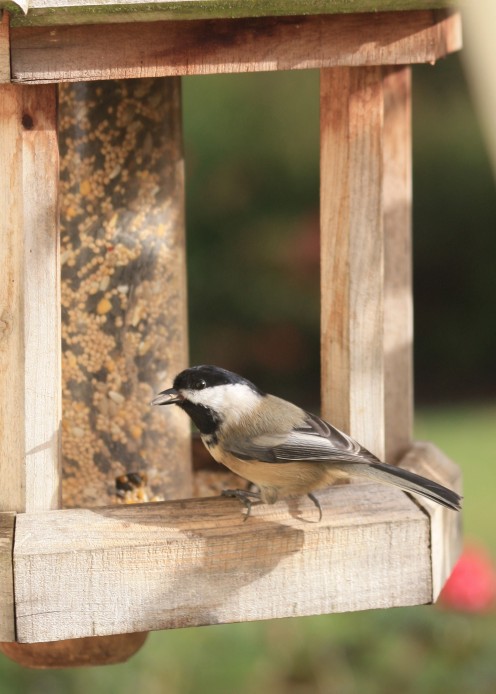
Brid Song Challenge
- eNature: BirdCall Challenge
See if you can identify the birdsong or birds in your area.
Attract and Care for Chickadees
Put out a new feeder and Black-capped Chickadees may be your first visitors. These birds are among the most responsive to human bird calls and can be taught to feed from your hand.
Man-made birdhouses need a 1 1/8 inch (2.9 cm) diameter entrance hole. Anything larger, say 1½ inch (3.8 cm), will encourage swallows and bluebirds. Unfortunately, the size used by chickadees will also invite the unwelcome house wren, known to destroy the eggs and young of its chickadee competitor.
Mount the birdhouse 5 to 15 feet (1.5–4.6 m) above ground, oriented to received sunshine 40-50% of the day. Since chickadees will use birdhouses left up over the winter as roost sites, clean them as soon as the young have fledged. Then clean them again for springtime breeding.
Predators include certain hawks and owls, raccoons, squirrels, and opossums.
References
Macaulay Library, Cornell Lab of Ornithology.
www.all-birds.com
www.allaboutbirds.org
The Birdwatcher's Companion to North American Birdlife, Published in collaboration with the American Birding Association, Christopher W. Leahy, Princeton University Press, 2004.
The Armchair Birder, Discovering the Secret Lives of Familiar Birds, John Yow, The University of North Carolina Press, 2009.
Birds in Your Backyard, A Bird Lover's Guide to Creating a Garden Sanctuary, Robert J. Dolezal, The Reader's Digest Association, 2004.
National Audubon Society Field Guide to North American Birds, Eastern Region, John Bull and John Farrand, Jr. , Chanticleer Press, Inc., Alfred A. Knopf, Inc., 1994.
Field Guide and Audio CDs, Birds of Michigan, Stan Tekiela, Adventure Publications, Inc. 1999.

